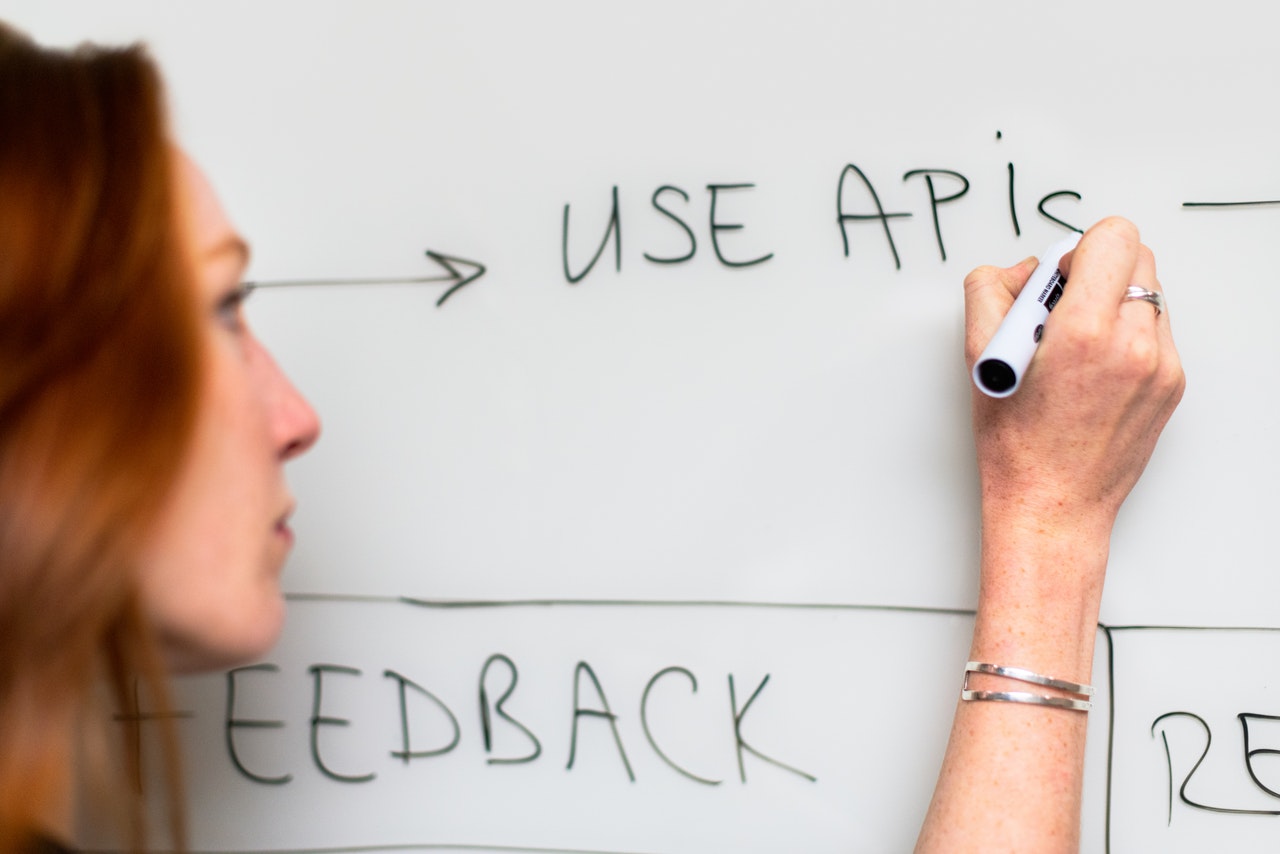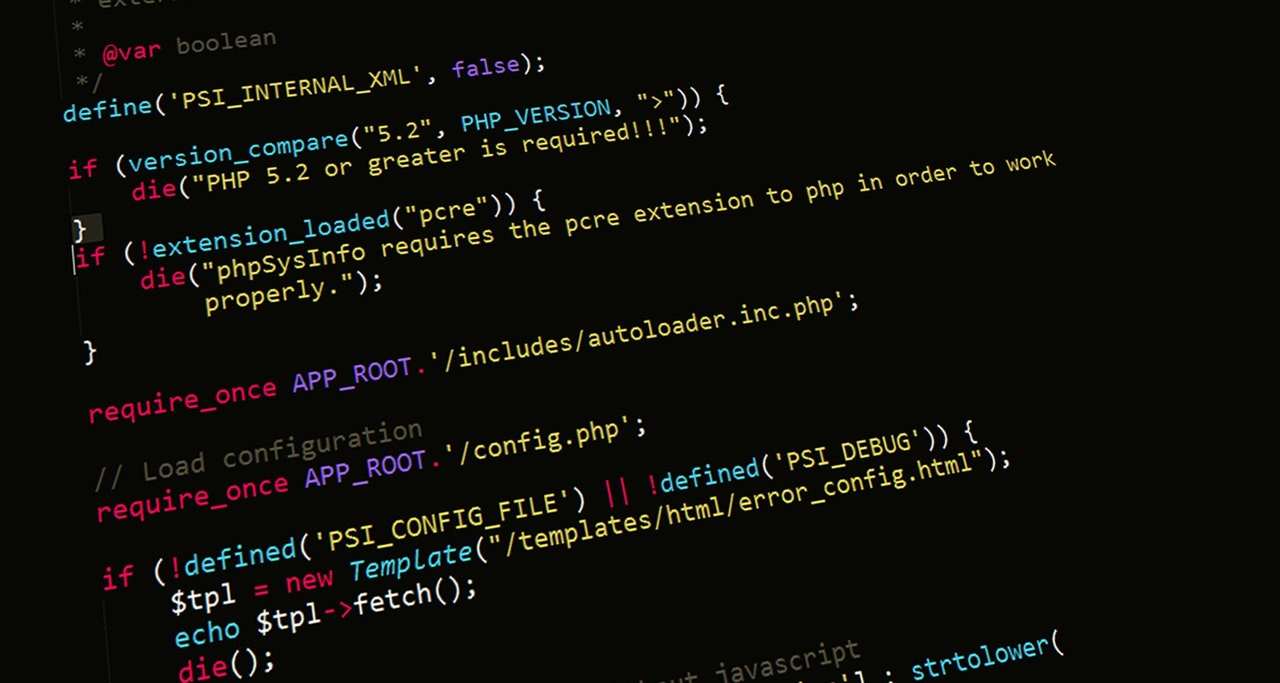What is a Frontend Developer? Skills of a front-end web developer
Published

Front-end development is a fantastic career path in technology. The job grows quickly and there is a significant talent shortage. This means that new front-end developers have a great opportunity as the world becomes more and more technology-oriented.
At the same time, you may be wondering what a frontend developer actually is - and what they actually do. That's what this guide is about: you'll learn what a front-end developer is and what they do all day, what skills you need to become a front-end developer, and what career paths and salary options are available for front-end developers.
If you want to acquire new frontend skills or expand your existing skills, Skillshare is suitable for you. Please click here to access Skillshare's learning platform and gain new insights into a wide variety of topics.
What is Frontend Development?
Frontend development is about making technologies (products or websites) visually appealing and intuitive.
What does a frontend developer do?
Simply put, a front-end developer takes the functional code of a technology product (or website) and makes it engaging and accessible to people.
Is frontend development easy?
Becoming a successful front-end developer, like any other profession, comes with challenges. However, many elements of the process are made easier with increased access to resources and online courses. In addition, there are numerous mentors for front-end developers through boot camps or through your employer, which makes learning much easier.
What is the difference between a frontend developer and a backend developer?
A Frontend developer develops technology and designs the user page (i.e. what customers or clients see). A Backend developer on the other hand, develops the core functionality and features of a technology that is later exposed by the front-end development team.
Frameworks and programming languages used by front-end developers
Front-end developers use a variety of programming languages and frameworks, many of which overlap with web design work. Here are the top languages and frameworks that all frontend developers should learn.
HTML
Hyper Text Markup Language (HTML) is the standard markup language for web pages. Using HTML, front-end developers design and create the various elements of a page, such as: B. to identify header text or to structure sections of a web page. As you learn HTML, you will also want to learn about popular programming interfaces such as the Document Object Model (DOM) interfaces.
CSS
CSS - oder Cascading Style Sheets - describes how HTML should look like on a website. These style elements can be used for each individual page or for the entire website, e.g. B. for designing a header or footer. Creating cross-page CSS is a common time-saving measure for front-end developers.
JavaScript
JavaScript is a client-side programming language that allows you to create complicated or complex functionality on a website. While HTML and CSS focus on how the website displays or looks, JavaScript is more about how the website actually works or what it can do. Learning JavaScript also includes learning the most important libraries such as jQuery. JavaScript is also a full-stack development language, meaning. H. it can be used for both front-end and back-end development.
PHP
Similar to JavaScript allows PHP developers to create complex functions on a website. A key difference is that PHP is server-side, i.e. H. it produces HTML code that can be displayed on a website.
Python
Python is a general-purpose programming language that works on all major operating systems. The code itself is designed to be readable, so it's a little easier to spot bugs or problems in the codebase than with other languages.
APIs
An application programming interface (API) defines the interactions between different software components. This is an important skill for frontend developers because you will have a lot of work connecting different technologies to make it appear seamless on the client side. Learning APIs also requires learning certain popular query languages like GraphQL. Another important part of API development is understanding headless and composable systems, which are API-first technologies designed to interconnect with each other.
What a frontend developer works on
Frontend developers work on a variety of projects that always revolve around how a website looks and feels to the end user.
Complete websites
A brand's website is the face it shows to the world. Front-end developers are tasked with making these websites intuitive and attractive using HTML, CSS, and JavaScript.
Landing Pages
Purpose-built landing pages are now widely used in the business world and are used for a variety of tasks:
Paid advertising campaigns.
- Niche marketing campaigns (e.g. a landing page about vacation).
- Testing a new concept before publishing it on the brand's main website.
- Conducting competitions or competitions.
- Promote a specific thing (e.g. a newsletter or webinar).
Front-end developers often create these pages either by coding them from scratch or by working with popular landing page builders like Unbounce, Leadpages, or Instapage.
Content management systems (CMS)
From hosting a blog to simply editing content on the homepage, front-end developers often work with content management systems (CMS) to set up and operate them. Without a good CMS, brands have to hard-code every word on a website, meaning even a single typo becomes a complete “feature request” for the development team.
E-commerce sites
Similar to landing pages, front-end developers can be tasked with designing beautiful eCommerce pages to sell a specific product or introduce a new product line. Even though many eCommerce brands use a platform like Shopify, front-end developers customize pages in the background with code.
Conversion Rate Optimization (CRO)
Working with small details like applying color theory or changing the size (and position) of a button, all in a series of tests to see what gets people more engaged.
Newsletter design and email drip campaigns
Newsletters are a popular way for brands to communicate directly with their audience. Additionally, newsletters (and email drip campaigns) are an increasingly popular method of selling. Front-end developers can code an email or drip flow from scratch using HTML, or customize email flows using tools like Marketo or Hubspot.
Cross-browser development
Cross-browser development is the process of building websites to be compatible with multiple browsers. For example, a company can: For example, you might create a website using Google Chrome, but front-end developers then make the site work with Mozilla Firefox, Safari, and Microsoft Edge.
Responsive design
Responsive design is similar to cross-browser design. However, instead of rendering a website correctly on multiple browsers, responsive design considers the user interface on multiple devices with different screen sizes: tablet, laptop, large screen, and smartphone.
Accessible design
Many websites are difficult to use for people with visual or hearing impairments, or limited hand mobility (i.e., they cannot navigate or type quickly with the mouse). Accessibility design is about retooling websites to make them more accessible, e.g. B. that they can be easily navigated with the keyboard or voice, that the font size can be easily increased or reduced and that images and text are easier to recognize thanks to high contrast.
Troubleshooting
When something goes wrong on a website, it's usually the front-end developers who tackle the debugging process: they try to recreate the action that caused a problem to identify the cause in the front-end code (and then fix it).
Characteristics of successful frontend developers
Here you can find out which people are best suited for the job of front-end developer.
Who can become a frontend developer?
While developers are usually portrayed as young men in movies, in reality, any person - regardless of age, gender, race or other characteristics - can become a front-end developer. This is especially true now that there are so many resources available for front-end developers.
Why would I want to become a frontend developer?
There are many reasons why someone would want to become a frontend developer:
- Money: The job pays well and has good career prospects.
- Challenge: You can work on a variety of interesting things.
- Impact: The work of front-end developers is seen by everyone who interacts with a brand.
- Development: Getting into front-end development is a great way to start your career before moving on to further development in various technical areas.
How long does it take to become a front-end developer?
You can learn the basics of front-end development in a matter of weeks and even find a job as a junior front-end developer. Mastering the knowledge takes much longer. Additionally, there is no official point at which frontend development is "complete." Languages are constantly evolving and changing, so you need to continually educate yourself to keep your skills up to date.
Required soft skills
Front-end development is not just about programming. You also need these soft skills:
- Curiosity: The landscape is constantly evolving - you must have the desire to continue learning.
- Grips: There are many hard days and difficult challenges that you must overcome.
- Empathy: They build the visual identity of a brand. When doing your work, you need to think about how it will be perceived by others.
- Problem-solving skills: When faced with a challenge, you need to know a few basic rules to break down the problem and ultimately find a solution.
- Testing Mentality: Front-end developers do a lot of testing to see what works. You need to adopt this mindset.
- Collaboration: You will spend a lot of time collaborating with either colleagues or clients, depending on how you work and what company you are in.
- Prioritize: There will always be things you don't have time for. You need to know how to prioritize the most important tasks and then get them done.
Career prospects for front-end developers
There is more to a job than just the pay. If you're thinking about becoming a front-end developer, you should also think about how the role is evolving and what job opportunities will open up in the future.
Are frontend developers paid well?
Front-end developers are typically very well paid and have good job prospects.
Front-end developers in the United States earn on average about $50,000 per year, ranging from about $40,000 for junior front-end developers to $105,000 for more experienced front-end developers.
It's worth noting that many frontend developers earn more than this range. This depends on factors such as experience, the specific company and the location.
If you choose freelance work, you can earn more than these average salaries. Loud CodeMentor The average rate for a freelance front-end developer is $61-80 per hour. To earn the average US salary, a freelancer would only need to work 16 hours per week.
Are frontend developers paid less than backend developers?
Back-end developers typically earn slightly more than front-end developers. In the United States, the average salary can be from Backend developers rise well into the six-figure range.
freelancer On the other hand, they earn the same amount: the average is 61-80 dollars per hour.
Career path for a front-end developer
Once you master the skills of a front-end developer, there are many options open to you.
specialization : You can focus on one area of front-end development, build in-depth expertise and make an individual contribution over the years. This could mean a promotion to a senior front-end developer or a corporate move to a company that relies heavily on your skills and therefore offers you higher salary opportunities.
Management : If you like the coaching and planning element of front-end development, you can move into leadership and management. In this role, you won't code as often, but you can increase your influence by leading teams.
Advice : If you have in-depth technical knowledge but don't like the daily programming tasks of front-end development, you can take on a consulting role. As a consultant, you will provide advice to either younger developers (as an employee) or tech leadership clients (as a freelancer). Although most consultants are typically freelancers or independent contractors, you can also provide in-house consulting as an employee.
A Startup found : If you have an entrepreneurial mindset and think you've found a problem worth solving, you can use your front-end development skills to build a tech startup. Depending on the scope of the project, you may need to find a co-founder with additional skills, but in any case, you can use your valuable skills to work for yourself.
The seven-step process to becoming a frontend developer
The path to becoming a frontend developer is relatively easy. After you have learned the relevant programming languages and prepared your portfolio, it's all about finding the right offers and convincing them in a pitch or interview. Here are some tips on how to successfully complete the seven necessary steps.
1. Learn front-end programming languages
Learning the different programming languages in front-end development can be difficult. However, there are several ways to acquire these skills.
Take a coding bootcamp course
Coding bootcamps add value because they offer a lot of personal interaction, coaching, and occasionally even career mentoring. They are also usually fairly quick to complete (in just a few weeks).
Self-study with online courses
There are a variety of online frontend developer courses that can take you from scratch to mastery (or help you hone your skills if you already have a foundation). Online courses are usually relatively inexpensive compared to bootcamps or university programs. Sometimes they are even free. Plus, you can work at your own pace, which is ideal if you want to learn these skills alongside another job.
Participate in a university or college program
Regardless of whether it is a complete course of study or further training, universities and technical colleges offer a variety of opportunities to learn front-end development. A university or college program is likely to provide as much theory as practice, making it a good option for people who want to understand how programming languages are created and how to use them.
Learn from your current employer
Many companies offer their employees scholarships for professional development. If this is the case at your company, ask if the company will support you in learning front-end development. Alternatively, some companies offer mentorship or job shadowing programs where you can learn front-end development from an existing development team.
2. Review your experience
Once you've learned some front-end development skills, the next step is to prove them.
Coding challenges
Coding challenges are a fantastic way to test your experience. Not only do they objectively test whether you can code, but they also give you feedback on where you can improve next time.
Create your own projects
If you can't find a programming challenge you like, or if you want to express your passions or interests, create your own projects. These can serve as a portfolio (see step 4 below!), but can also help a potential client or employer learn more about you: why you developed this particular project, what frameworks you used, or what shortcuts you took and how Overcame obstacles during the development process.
3. The choice between freelancing and employment
Front-end developers are in demand, both as employees and as freelancers. So it is likely that you will find employment regardless of the path you choose. However, an employee is completely different than a freelancer.
Two frameworks to help you choose are the Worst Days Framework and the Day-to-Day Framework.
1. Framework for the worst days: The worst days as an employee mean dealing with work politics, bullying, irrelevant work, and ownership of your time. The worst days of freelancing mean having no clients (or terrible clients), feeling completely alone, and having to do all of the business admin work yourself.
2. Daily Framework: On a given day, employees have team meetings, plan the next sprint, and code. Freelancers, on the other hand, may perform the same tasks as employees, plus send out invoices or do their own marketing to find new clients.
If you choose either path, you should weigh up which bad days you are more likely to tolerate and which average days you are more likely to enjoy. Also remember that you don't have to commit to one path for life. You can start with one and then move on to the other - or even do both by working a full-time job and freelancing on the side.
4. Create a front-end developer portfolio and resume
Validating your skills is a good start, but a front-end developer portfolio and resume make it easy for potential clients or employers to get to know your work.
Create a frontend developer resume
Create a document that clearly outlines your front-end development skills. You can specify a range for each skill so potential employers know in which areas you are beginner, intermediate, and professional. This document provides a solid foundation for exploring professional and freelance opportunities. Some companies use different programming languages. So if you know what you're good at, you can find the right job.
Create a portfolio
Compile all challenges, projects and previous work in a clear portfolio. Make sure your portfolio is comprehensive so you can showcase all the skills you want to be hired for:
- A Cloned Website: Build a popular website from scratch using your front-end development skills.
- A CRUD Web Application: A CRUD application is a rudimentary web application that shows you have mastered the four basic functions of front-end development: "Create, Read, Update, Delete."
- API Connected Website: Create two individual websites and connect them with an API to demonstrate that you can create seamless data flows.
5. Identify job opportunities
With your portfolio in hand, it is now time to find work opportunities, whether as an employee or as a freelancer.
Talent marketplaces
Professional networks like LinkedIn (or freelance marketplaces like Upwork or Fiverr) are great places to find freelance or full-time work in front-end development. If you work as a freelancer, you can also sign up for managed services like TopTal, which will find work for you and manage much of the client relationships.
Job boards
There are a number of niche job boards just for front-end developers and other technical careers, including:
- Unicorn Hunt
- AngelList
- GitHub Resources
- Front End Remote-Jobs
Your network
People you already know (or are connected to on social media) can be a wonderful source of work. Make sure you're getting referrals from your network by keeping your LinkedIn up to date, having an online presence, and having all the professional stuff like business banking and automatic invoicing ready.
6. Master the pitch or interview
Have you found an offer that you like, applied and received an invitation to an interview? Great! Here's how to show up prepared.
Research the company
Whether you're interviewing for a job or applying for a freelance client, research the company thoroughly. Take a look at the company's website, paying particular attention to front-end tasks that were done well or areas that could be improved. Also read the press reports about the company.
The goal is to get a better feel for the company as a whole: its goals, its vision and how it serves its customers. Front-end development is critical to a company's external image, which is why you need this additional context.
Know your 'why'
A good candidate is not only someone who has high-quality skills, but also someone who actually wants to work for the company. As you prepare for your interview, think about why you value front-end development and why you think this opportunity might be a good fit for you. No need to get too maudlin here and act like this is the only company for you. However, you should be able to clearly articulate why you care about the company's work.
Customize your portfolio
Customize your portfolio to focus on the skills or experiences you think are most important for the job you're applying for. This is particularly important if your portfolio is very large or varies widely. Companies hiring applicants want to see relevant examples first - and show off all your great work later.
7. Learn more about your customer or employer
Once you've been awarded the contract, success lies in not only delivering good work, but also designing it in a way that adds value. Below you will find out what you should know so that you can get started right on the first day.
Your way of working
Ask about the regular meetings (especially if you have to attend them), the decision-making processes and the general hierarchy in the company. If in doubt, you can look up the company on LinkedIn, but sometimes the actual operations aren't clear from an organizational chart.
The tools and technologies used
Do you work in a Slack company? Or do they use Microsoft Teams, Google Drive and Basecamp? Will the brainstorming be done using Hangouts, Zoom or Miro? Whatever it is, make sure you know about the tools you need to use. Of course, this is in addition to the development tools they use, like Atlassian or GitHub.
How you can communicate with them
If you're an employee, you'll likely be plugged into the company's chat system (like Slack). If you are a freelancer, things can look different. Be sure to do your research in advance so that your work (and your questions) don't get lost in the digital space.
What success looks like
Check how the company defines success - both for projects and for the company in general. If possible, ask for specific metrics. If you can't get metrics, ask how the company specifically understands, visualizes, or defines success so you know what you're working toward.
The course for success as a front-end developer
Die Frontend development is a sought-after profession in which you have a direct influence on how a company looks to the outside world. It is an incredible challenge, but one that also brings significant financial and other benefits. If you're thinking about becoming a front-end developer, take the time to make sure it's the right path for you. Then build the right skills to set yourself up for success.








